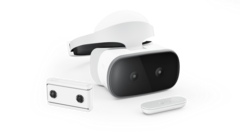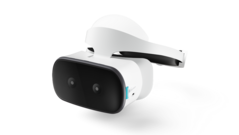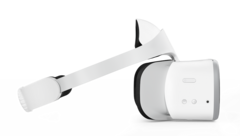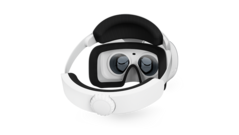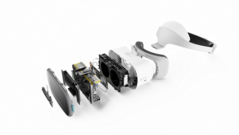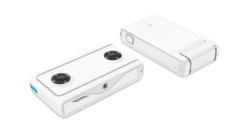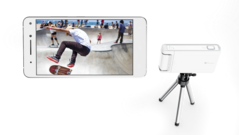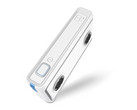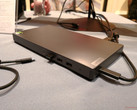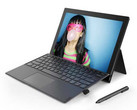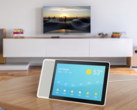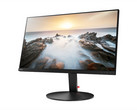Lenovo Mirage Solo with Daydream VR headset
The Mirage Solo with Daydream is a standalone VR headset which allows the user to immerse themselves in virtual reality without the usual array of power and video cables that usually tether to a PC. It is the first standalone headset to use Google’s Daydream platform, and the Mirage Solo utilizes the WorldSense motion tracking technology to allow leaning, dodging, and ducking actions. Compatible content relies on the Daydream platform, but examples include learning about and exploring the Acropolis in Athens, or a mini-game searching for clues to a mystery involving Replicants in the congested streets of Blade Runner.
Specifications:
- SoC: Snapdragon 835
- RAM: 4 GB
- Storage: 64 GB UFS + up to 256 GB MicroSD
- Audio: 3.5mm headphone jack + dual microphones
- Display: 5.5-inch 2560 x 1440 QHD 75 Hz LCD with 2 x lenses giving 110-degree FOV
- Battery: 4000 mAh for up to 7-hour battery life
- Control: 3 DOF Wireless Daydream controller plus tracking cameras with 6 DOF
- Wireless: 802.11ac 2x2 MIMO and Bluetooth 5.0 BLE
- Dimensions: 204 x 270 x 180 mm (8.03 x 10.61 x 7.08 inches) W x L x H
- Weight: 645 g (1.42 pounds)
The Mirage Solo with Daydream is expected to be available during the second quarter of 2018 with a starting price of ‘under US$400.’
Lenovo Mirage Camera with Daydream
The Mirage Camera with Daydream is a dual-lens camera that takes the shape of a chunky smartphone. The lenses are identical apart from the placement on opposite ends of the body, which allows the camera to record VR ready 3D content without the need for professional equipment. The video or images can be wirelessly uploaded to Google Photos or YouTube or used locally, e.g., via WiFi Direct to pair to a smartphone. Users can toggle between three modes: photo, video, and live broadcasting.
Specifications:
- SoC: Snapdragon 626
- RAM: 2 GB
- Storage: 16 GB eMMC2 + up to 128 GB MicroSD
- Cameras: 2 x 13 MP F/2.1 fisheye lenses with 180 degree FOV
- Video: VR180 format 4K/1440p/1080p at 30 fps
- Battery: 2200 mAh (removeable) for up to 2-hour battery life. Charge via USB-C 5V / 1A
- Audio: Dual microphones, single speaker
- Control: Power, function, shutter, 6 DOF
- Wireless: 802.11ac, WiFi Direct, Bluetooth 4.2 BLE. LTE UMTS B1/2/5/8, LTE FDD B1/2/3/4/5/7/8/20, LTE TDD B38/40.
- Dimensions: 55 x 105 x 22 mm (2.16 x 4.13 x 0.87 inches) W x L x H
- Weight: 139 g (0.31 pounds) for WiFi model or 145 g (0.32 pounds) for LTE model
The Mirage Camera with Daydream is expected early in the second quarter of 2018 with a retail price of ‘under US$300.’
Source(s)
Lenovo Press Material


 Deutsch
Deutsch English
English Español
Español Français
Français Italiano
Italiano Nederlands
Nederlands Polski
Polski Português
Português Русский
Русский Türkçe
Türkçe Svenska
Svenska Chinese
Chinese Magyar
Magyar